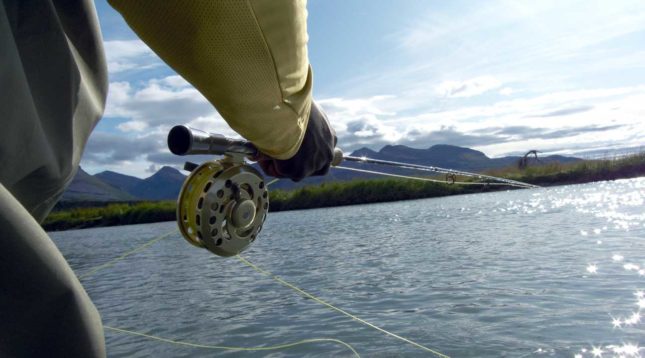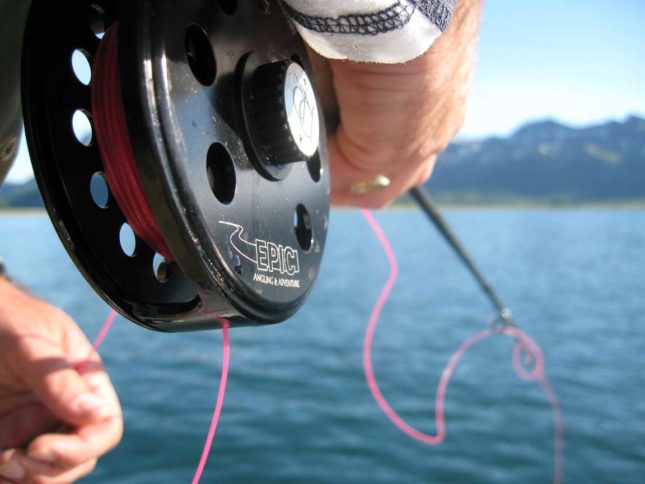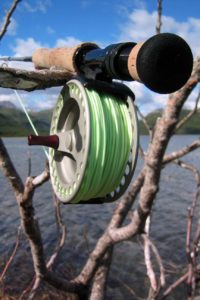Epic Blog
Machete’s Guide Gear Talk – Reels
06.21.20
Welcome back! In the last segment of Machete’s Guide Gear Talk we discussed fly rod recommendations for our first remote fly fishing camp, OUTPOST. Here we’ll dive into a general discussion about which reel will go best with your rod.
Reel Talk
Like rods, there are plenty of good options to choose from. One big consideration is to understand that there are a few different types of drag systems that are built into a fly fishing reel. Disc drag and click pawl (“clicker” or “click-n-pawl”) are the two main options. Each has specific advantages and disadvantages.
Your Grandfather’s Reel
You can think of a clicker like something your grandfather fished with and handed down to you. Its simple design gives it a timelessness, and hearing the racket made by a hot fish peeling line off your reel only adds to the exhilaration of the fight. Its major drawback is twofold: they don’t have the higher tolerances (less control) found in a disc drag and the moving parts are exposed within the body of the reel. This makes it susceptible to malfunctioning if dropped or dunked. If dirt or too much water find their way into the guts of the reel it can lead to problems.

There’s nothing wrong with your Grandfather’s reel, but modern disc drag reels offer more options and more stopping power. Photo by Johnny Quiroz.
The 21st Century
Disc drag reels incorporate more modern features and are better at automatically applying stopping power to a hot fish. Most come with a sealed drag that is better protected from the elements. Some have a check (a faux click) to mimic the sound of the older clickers while others run silent as they pay out line.
Some drawbacks are that if and when something does go wrong it can be much harder to diagnose and fix a problem. The sealed drag is usually something you cannot easily disassemble in the field. Many come with specific tools meant for taking the reel apart which, if lost or misplaced, can cause a major headache for the user. Especially if you’re days away from the nearest fly shop!
If you do buy a reel that requires a disassembly tool, be sure and bring the tool on your trip (and the directions if you don’t know how to use the tool)!
The Reel Answer
Ultimately, which one is better depends on the preferences of the angler.
A good disc drag reel is what we recommend for most anglers fly fishing in Alaska. They provide more adjustable stopping power and are far more versatile when considering the range of options available on the market.
For me personally, I sway towards the classic click pawl side of things. I personally like having less drag built into the reel and the ability to apply more pressure manually during the course of fighting a fish by palming the reel with my hand as a brake. In my mind, the simple design of a clicker just means there’s less that can go wrong. I’ve seen some very expensive reels with disc drags that could stop a Marlin seize up and conk out.
Generally speaking, though, disc drag failures are fairly preventable with good reel cleaning habits and periodic maintenance. (Or with some fishermen, any cleaning or maintenance!)
So Many Good Choices
I won’t wade into the mire of which reels I think are better than others. The most important quality of any reel is that you have confidence in its ability to perform. If you’re looking at the high end side of things you can’t go wrong with Hatch, Nautilus, or Abel. If you’re looking for something in the lower or mid range consider Ross, Lamson, Redington or Orvis.
Stay tuned for the next installment of Machete’s Guide Gear Talk, where we’ll talk about fly lines. Until next time!
Find more Machete articles here.



